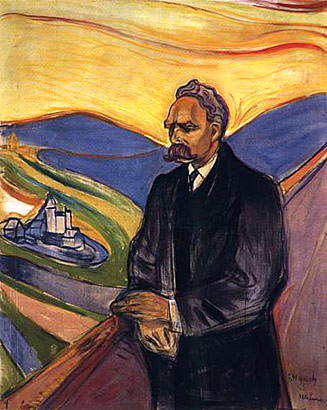Eero Saarinen: The Art of Architecture and Design
Eero Saarinen was not merely an architect but a visionary who transcended traditional boundaries, merging architecture with art in a way that redefined modern design. Born in 1910 in Kirkkonummi, Finland, into a family of artists—his father, Eliel Saarinen, was a renowned architect, and his mother, Loja Saarinen, a gifted textile artist—Eero's path seemed predestined. Yet, it was his unique approach to design that set him apart and cemented his legacy in the art world.
The Early Influences of an Artistic Family
Growing up in an environment saturated with creativity, Eero Saarinen was exposed to a wide range of artistic disciplines from an early age. His father's influence, particularly, was profound. Eliel Saarinen was a pioneer of Art Nouveau architecture, and his works, including the Helsinki Central Station, were celebrated for their elegance and innovation. Eero absorbed these influences but was never content to simply follow in his father's footsteps. Instead, he sought to forge his own path, one that would lead him to explore the intersections of architecture, sculpture, and industrial design.
Education and Early Career
Eero's formal education began at the Cranbrook Academy of Art in Michigan, where his father was the director. This institution was a hotbed of modernist ideas, attracting luminaries such as Charles and Ray Eames, Harry Bertoia, and Florence Knoll, all of whom would later collaborate with Saarinen. It was here that Eero began to develop his distinctive approach to design, one that emphasized form, function, and the seamless integration of art into everyday life.
After completing his studies at Cranbrook, Saarinen continued his education at the Yale School of Architecture. Graduating in 1934, he embarked on a European tour that exposed him to the works of the Bauhaus movement and the International Style. These experiences broadened his perspective and deepened his understanding of modernism, but Saarinen was not content to merely replicate these styles. Instead, he sought to innovate, blending modernist principles with his own artistic sensibilities.
The Sculptural Approach to Architecture
Eero Saarinen's architectural philosophy was deeply rooted in the belief that a building should be more than just a functional space—it should be a work of art. This belief is perhaps most evident in his sculptural approach to architecture. Saarinen's designs are characterized by their fluid, organic forms, which often appear more like sculptures than traditional buildings.
One of the most iconic examples of this approach is the TWA Flight Center at John F. Kennedy International Airport in New York. Completed in 1962, this building is a masterpiece of modernist architecture. Its sweeping curves and dynamic lines evoke the sense of flight, perfectly capturing the spirit of the jet age. The building's form is not only visually striking but also functional, with its flowing spaces designed to facilitate the smooth movement of passengers.
Another notable example is the Gateway Arch in St. Louis, Missouri. Completed in 1965, the Arch is a monumental sculpture that also serves as an observation tower. Its simple, elegant form—a 630-foot-tall stainless steel arch—symbolizes the westward expansion of the United States. Saarinen's design for the Arch is a perfect example of his ability to create structures that are both artistically beautiful and symbolically powerful.
Furniture Design: The Intersection of Art and Function
Eero Saarinen's contributions to design extend beyond architecture into the realm of furniture design, where he applied the same sculptural principles that defined his buildings. Saarinen's furniture designs are celebrated for their innovative use of materials and their organic, sculptural forms.
Perhaps the most famous of these designs is the Womb Chair, created in 1948 for Knoll. The Womb Chair was revolutionary for its time, offering a level of comfort and support that was previously unheard of in modern furniture. Its curved, enveloping form is both functional and aesthetically pleasing, embodying Saarinen's belief that furniture should be both beautiful and comfortable.
Another iconic piece is the Tulip Chair, designed in 1956 as part of his Pedestal Collection. The Tulip Chair is notable for its sleek, futuristic design, with a single pedestal base that eliminates the clutter of traditional chair legs. This design was not only visually striking but also practical, making it easier to clean around the chair. The Tulip Chair, like much of Saarinen's work, is a perfect example of his ability to blend art and function seamlessly.
Saarinen's Legacy in Modern Design
Eero Saarinen's impact on modern design cannot be overstated. His work has influenced generations of architects and designers, and his buildings and furniture continue to be celebrated for their innovative forms and timeless beauty. Saarinen's ability to blend art and architecture, to create spaces that are both functional and beautiful, is what sets him apart as one of the most important figures in modern design.
Saarinen's legacy is perhaps best understood not only through his completed works but also through his influence on the design world. His emphasis on the sculptural potential of architecture has inspired countless architects to think beyond the constraints of traditional building forms, to explore the possibilities of architecture as an art form. His furniture designs, meanwhile, continue to be produced and admired for their blend of comfort and style.
The Human Element in Saarinen's Work
While much has been written about the aesthetic qualities of Saarinen's work, it is also important to recognize the human element that lies at the heart of his designs. Saarinen was deeply concerned with how people would experience his buildings and furniture, and he designed with the user in mind. His buildings are not only visually striking but also thoughtfully designed to accommodate the needs of their occupants.
This concern for the human experience is evident in the interiors of Saarinen's buildings, which are often as carefully designed as the exteriors. For example, the TWA Flight Center features expansive, open spaces that encourage a sense of movement and flow, while the Gateway Arch's interior spaces are designed to enhance the visitor's experience of the monument. Saarinen's furniture, too, is designed with comfort and usability in mind, as seen in the ergonomic forms of the Womb Chair and the Tulip Chair.
Saarinen's Influence on Contemporary Design
Eero Saarinen's influence extends far beyond his own time, continuing to shape contemporary design. Many of today's leading architects and designers cite Saarinen as a key influence on their work, and his designs are often referenced in discussions of modern architecture and design. The continued production of his furniture designs by Knoll is a testament to their enduring appeal, while his architectural works remain iconic examples of modernist design.
Moreover, Saarinen's approach to design—his emphasis on the integration of art and architecture, his focus on the user experience, and his willingness to push the boundaries of traditional design—continues to inspire and challenge designers today. His work serves as a reminder of the power of design to not only shape our physical environment but also to enhance our experience of the world around us.
Conclusion: The Artistry of Eero Saarinen
Eero Saarinen was more than an architect; he was an artist who used architecture and design as his mediums. His work, characterized by its sculptural forms, innovative use of materials, and focus on the human experience, has left an indelible mark on the world of design. Saarinen's buildings and furniture are not only functional objects but also works of art that continue to inspire and influence designers around the world.
Through his unique approach to design, Saarinen demonstrated that architecture could be more than just the creation of functional spaces—it could be a form of artistic expression, a way to shape the world around us in meaningful and beautiful ways. His legacy as a designer and artist is one of innovation, creativity, and a deep commitment to the integration of art and architecture. Today, Eero Saarinen is remembered not only for the buildings and objects he created but for the artistic vision that drove his work and continues to inspire generations of designers.




